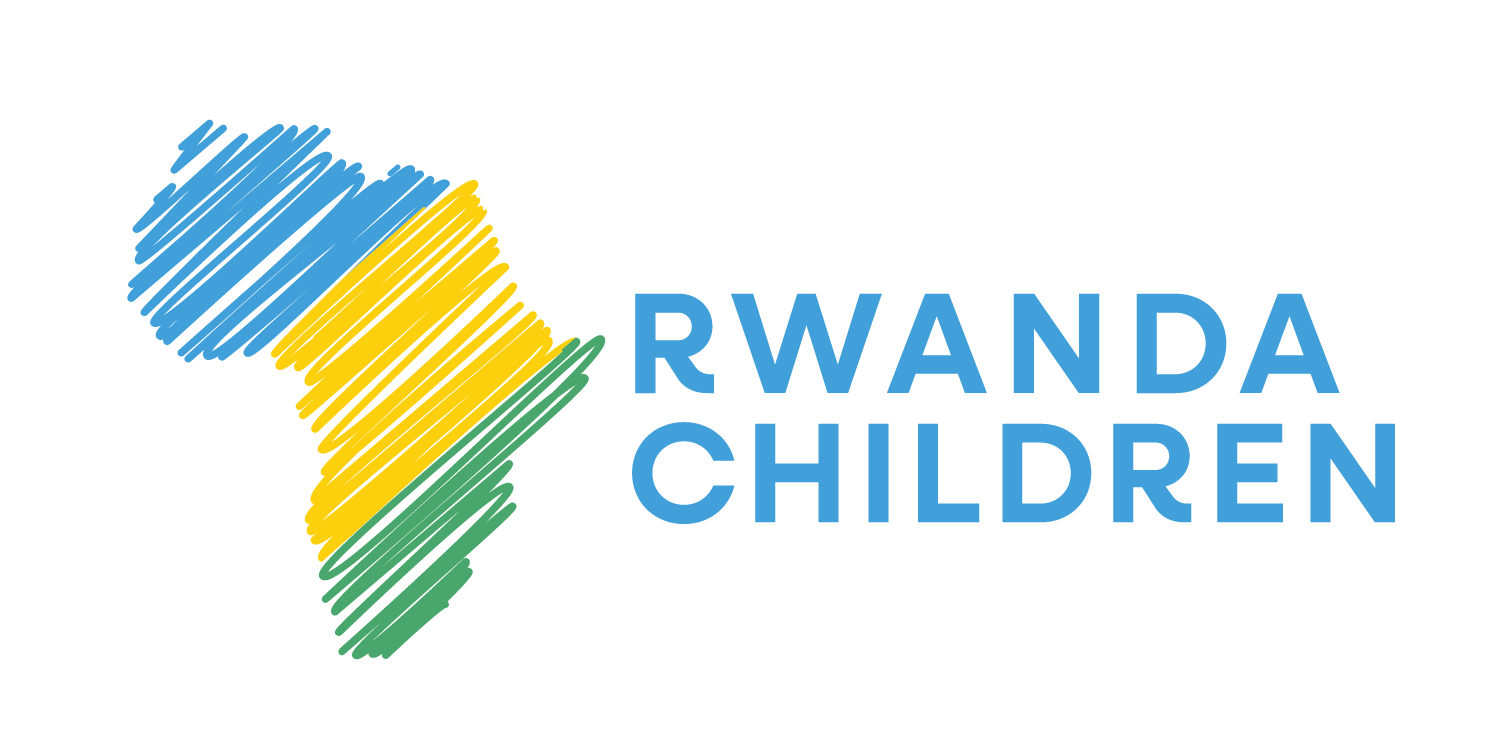How our bowls are made
Let’s take as an example creating an orange and white bowl. The white will come from the color of the virgin sisal fiber (below). Now we need to create some orange fiber that will enable us to make an orange and white bowl.
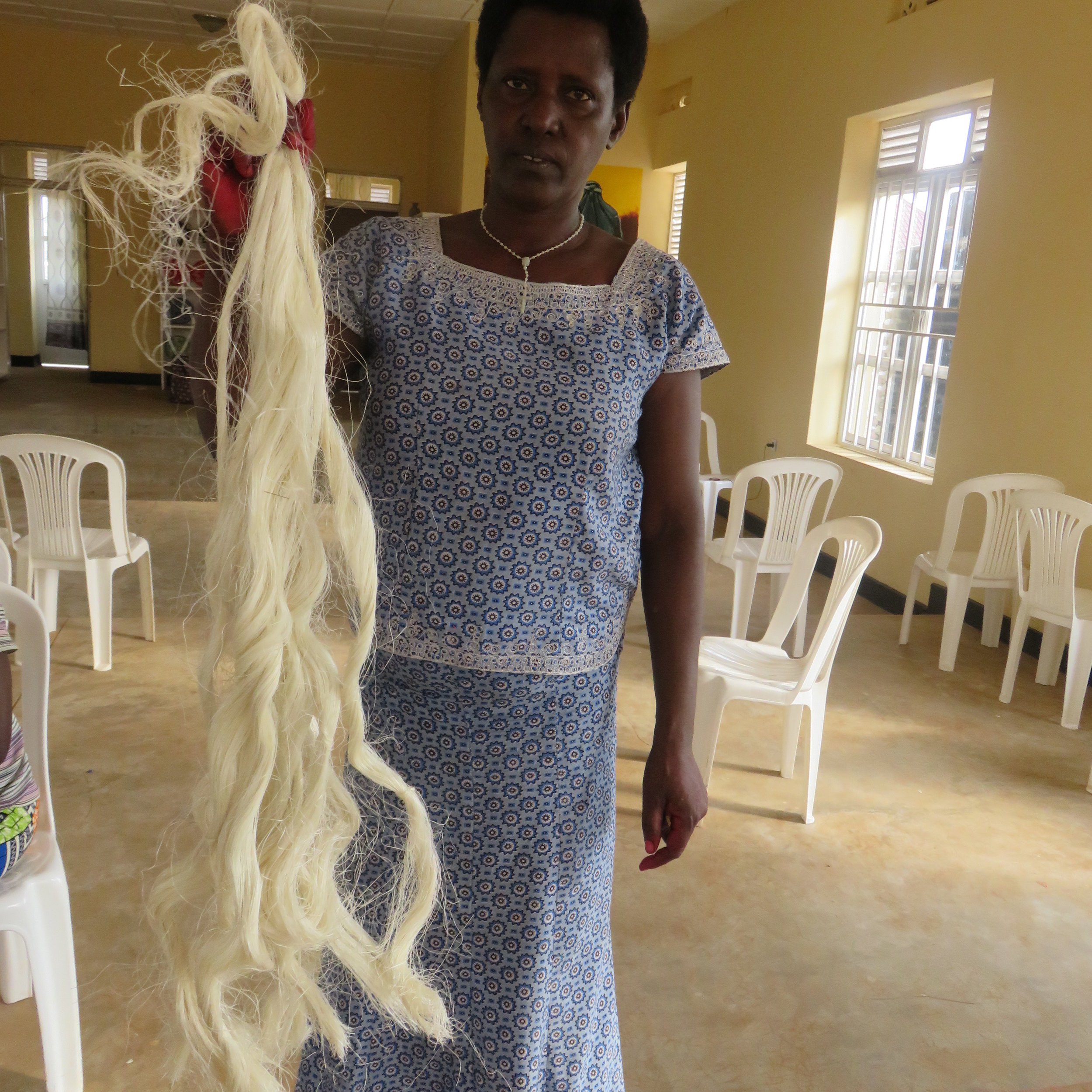
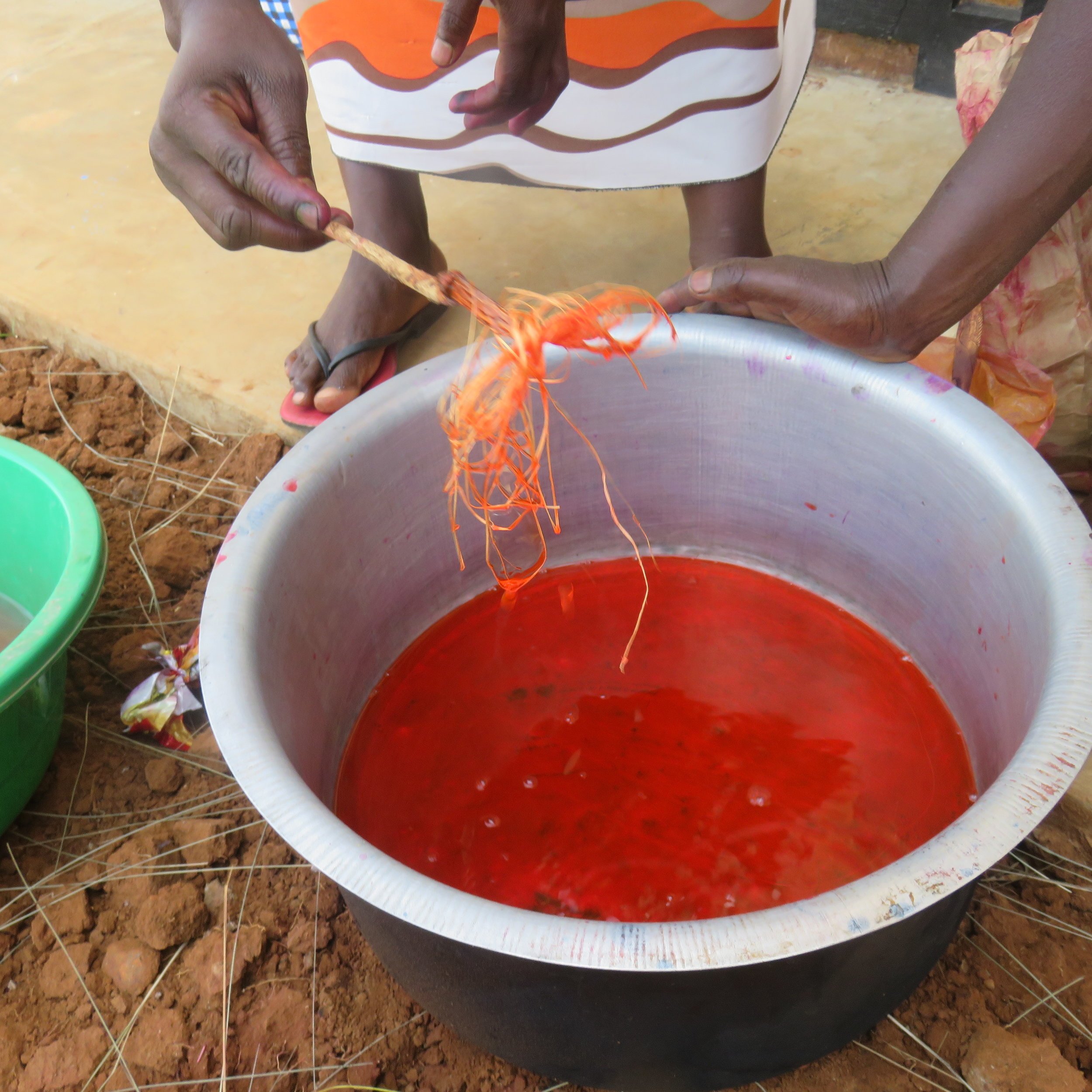
In order to change the color of the fiber, the women soak the fiber in a color. The various colors are made in different ways. The color orange is created by combining an orange-colored flour with water (Figure 1). You then stir the fiber in this mix until it changes its color to orange.
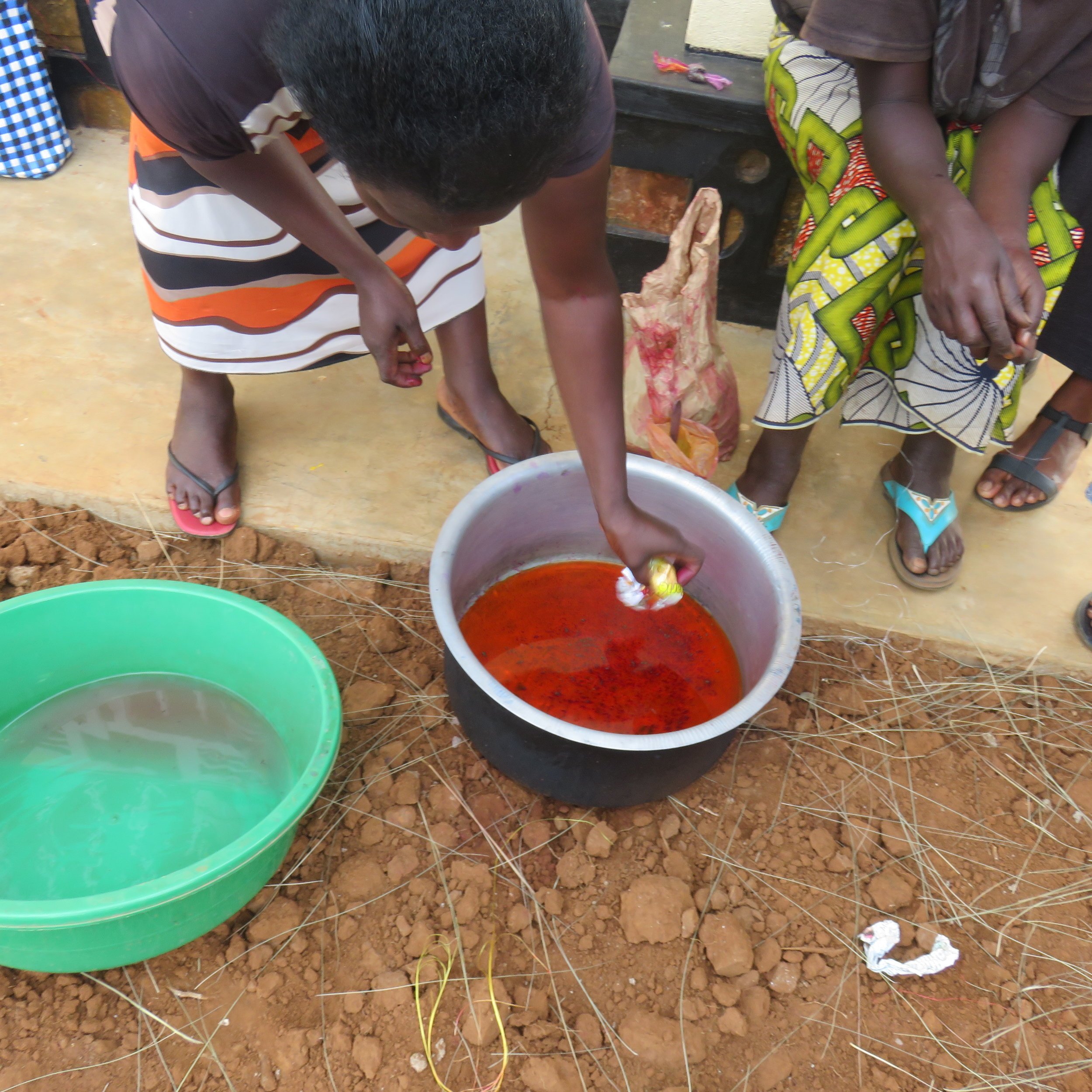
The process of making a bowl consist of many steps. First, you gather sisal fiber and different kinds of natural dyes that will change the fiber into whatever colors you wish the bowls to be.
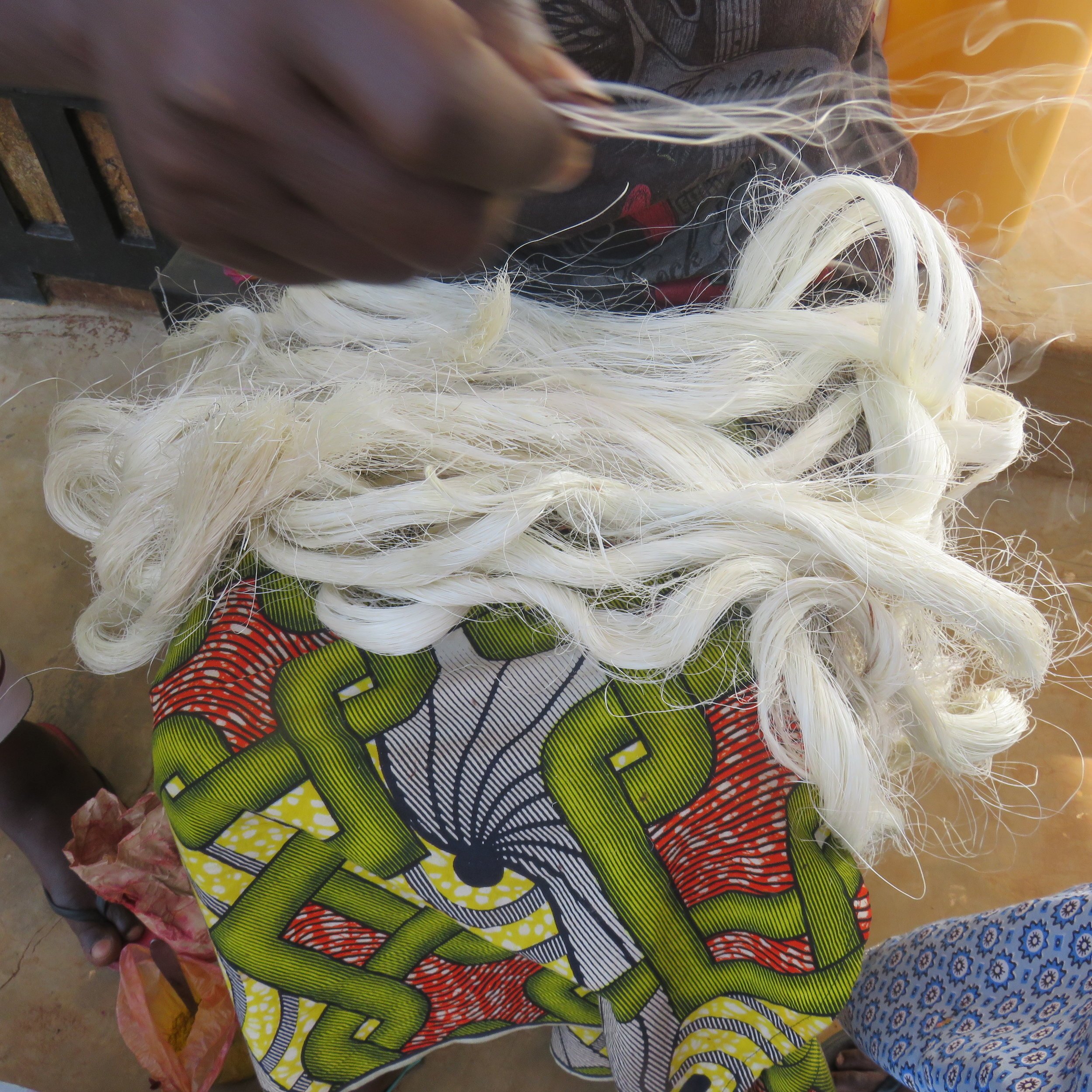
Virgin sisal fiber waiting on a color change.
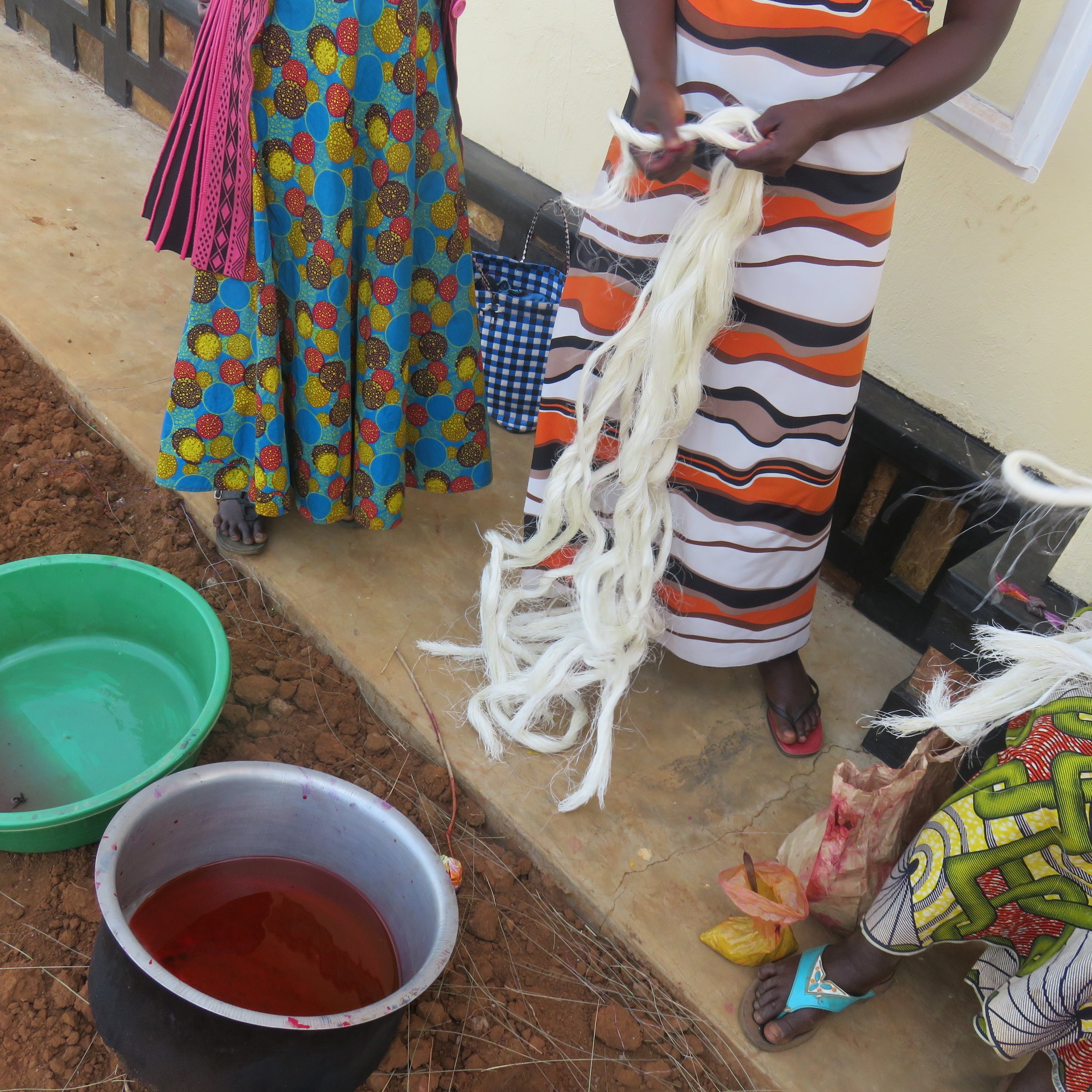
Preparing the fiber to be put in the coloring solution.
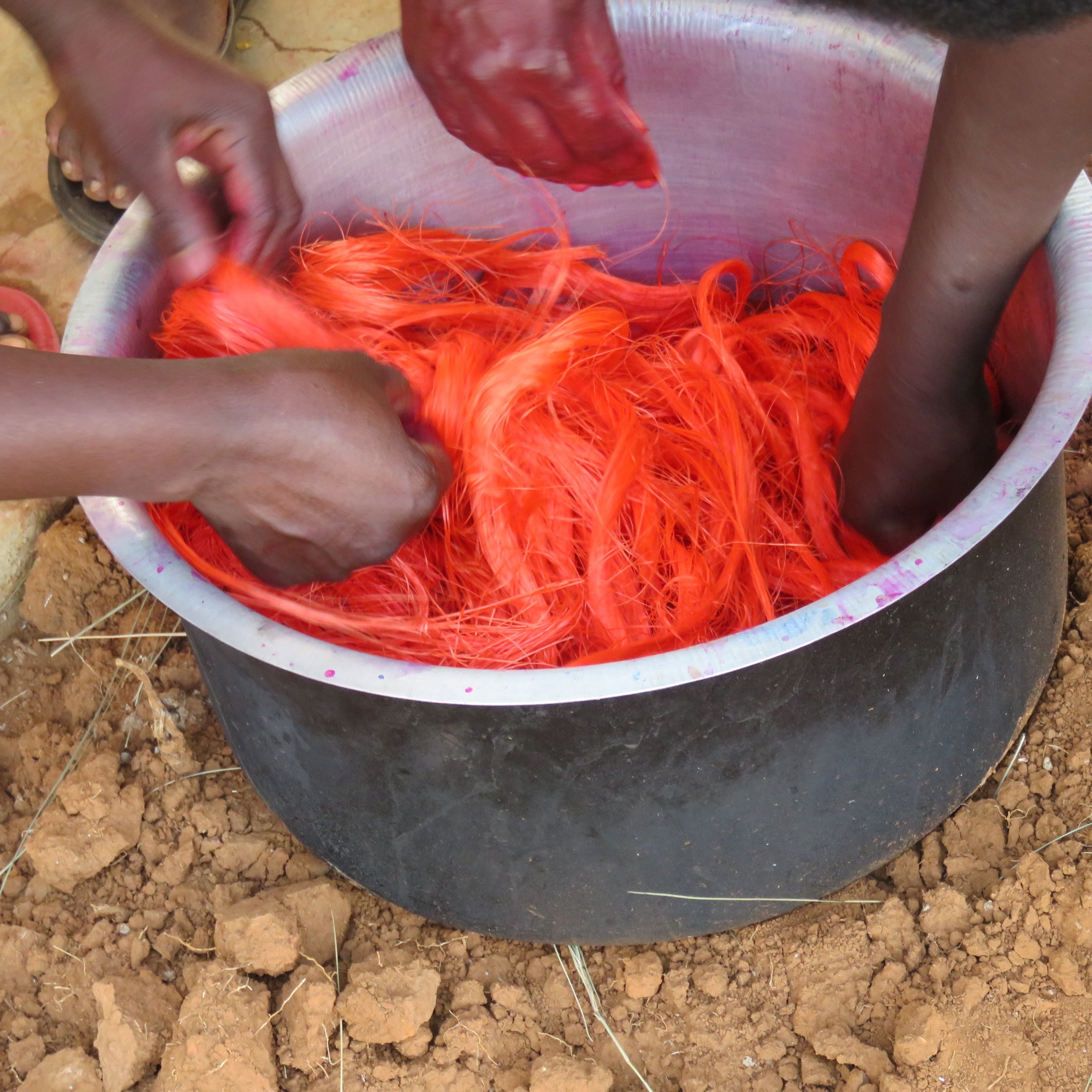
Stirring the fiber into the orange-coloring solution.
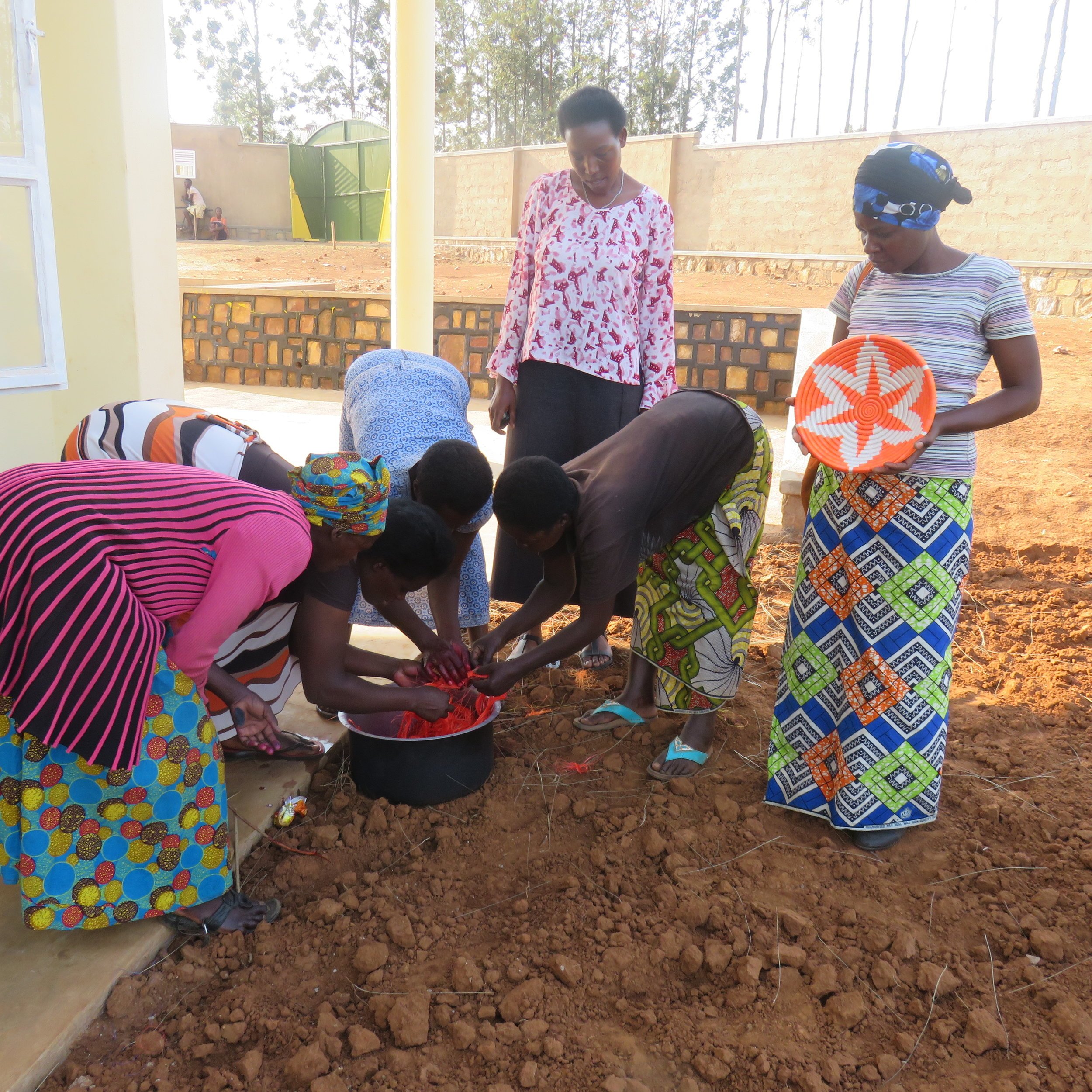
It's important to continue stirring until all of the fiber has changed to the desired color.
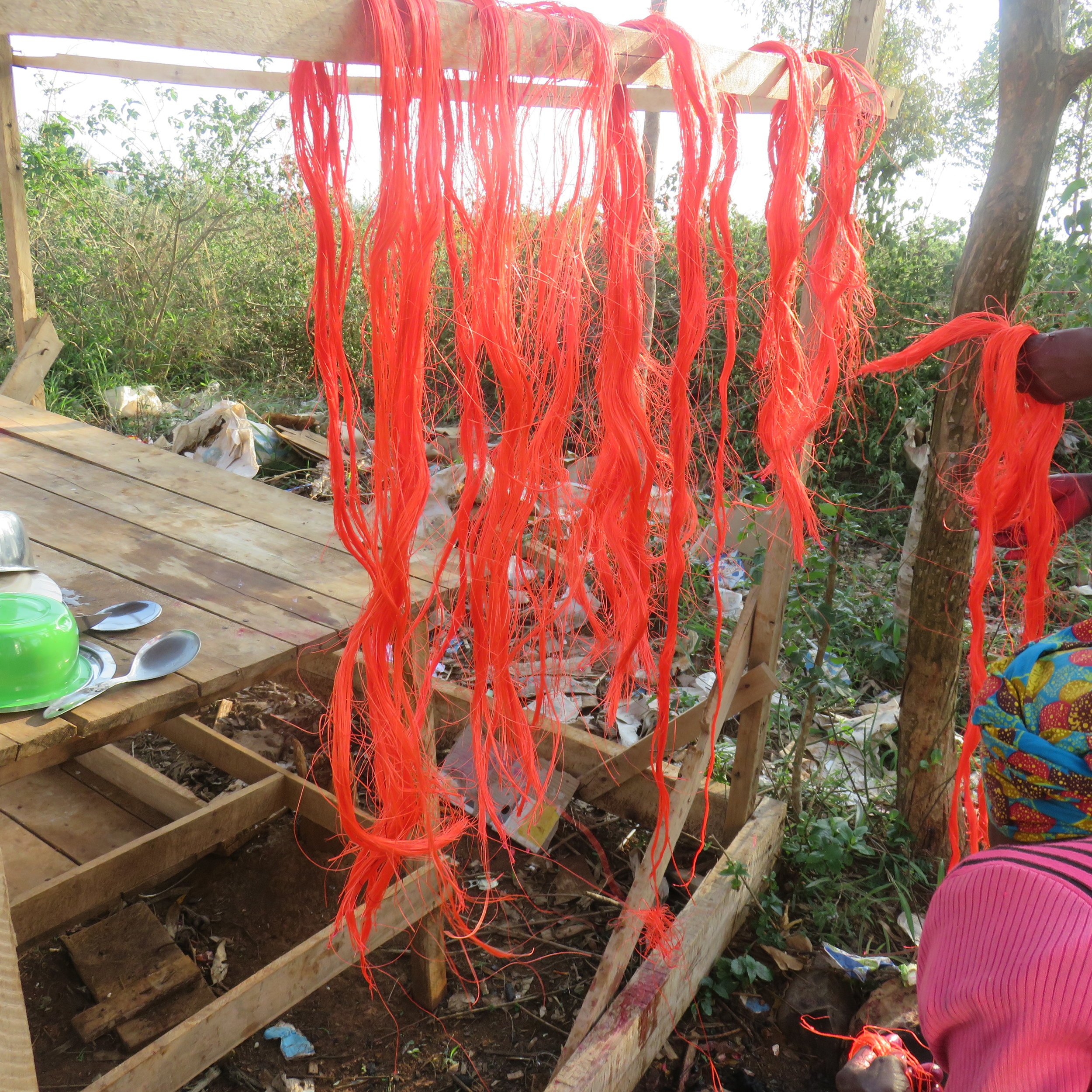
Once the sisal fiber has been transformed to the desired color, the fiber is taken to dry in a place where there will be no direct sunlight that might diminish the color.
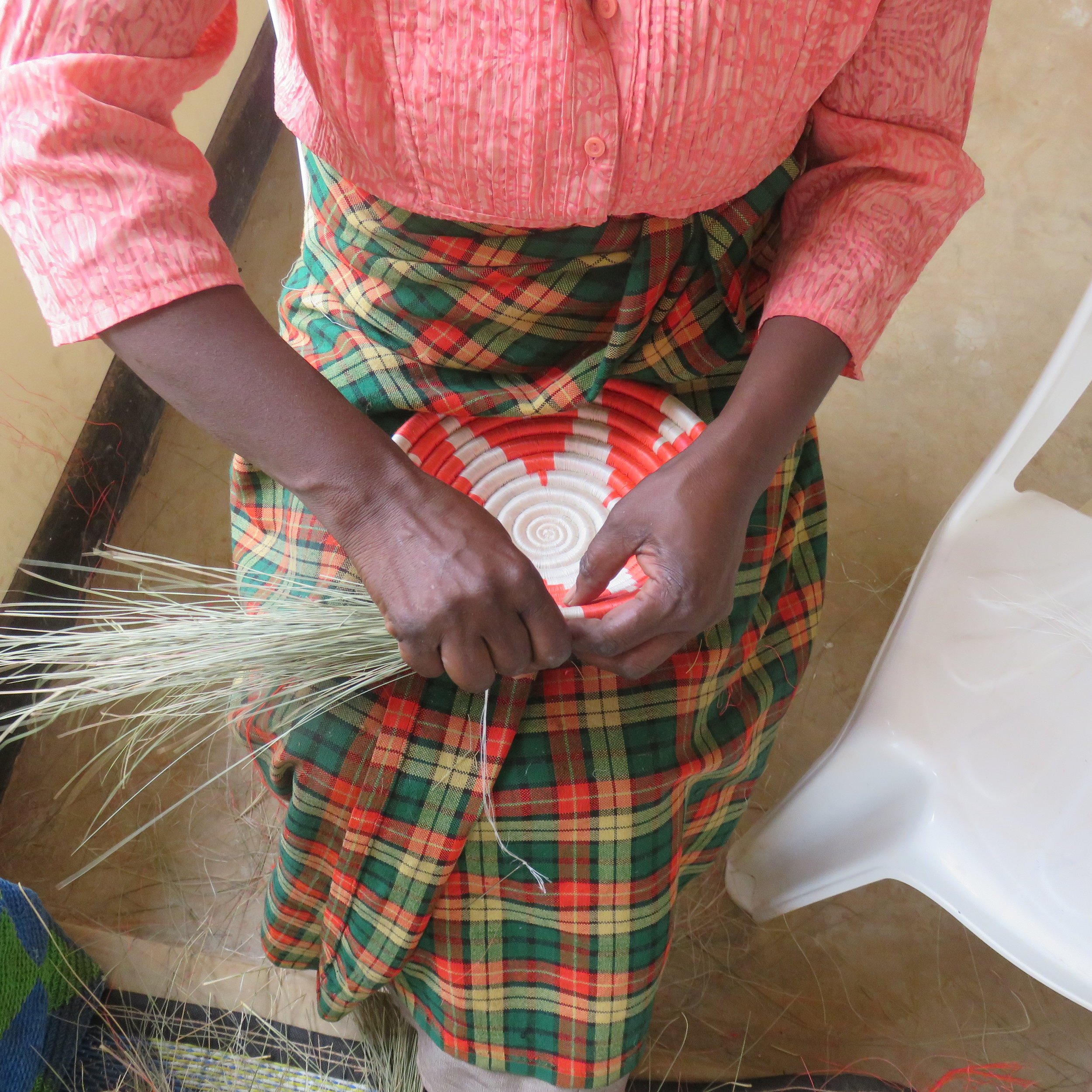
For the next step, you need a stiff grass called ”Ishinge” in Kinyarwanda, Rwanda's native language. To create a bowl, the fiber is woven around the "Ishinge" repeatedly, using different colors of fiber to create various designs.
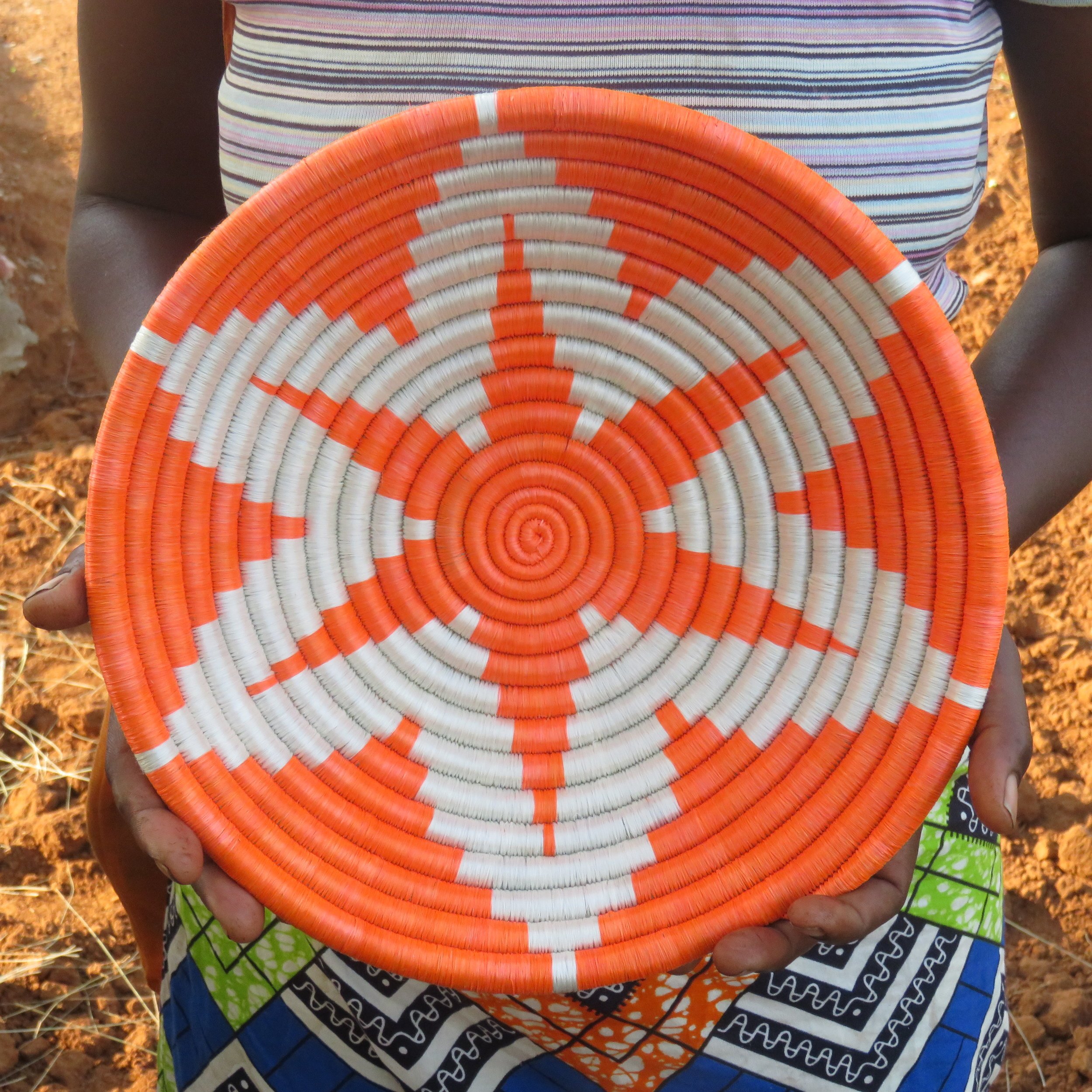
Beautiful! The finished product. A beautiful handcrafted orange and white "six-pointed star" bowl.
